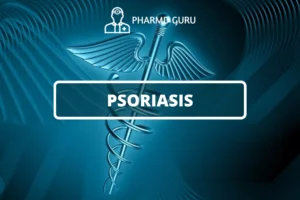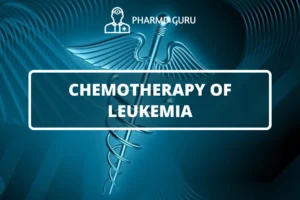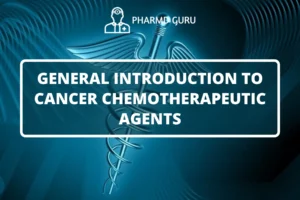Chemotherapy plays a crucial role in the treatment of breast cancer, a prevalent form of cancer affecting women worldwide. It is a systemic therapy that aims to destroy or inhibit the growth of cancer cells throughout the body. This article provides an overview of the use of chemotherapy in breast cancer treatment, including its goals, administration, common drugs used, potential side effects, and the evolving landscape of targeted therapies.
SCROLL DOWN TO THE BOTTOM OF THIS PAGE FOR ACTUAL NOTES.
Table of Contents
- Introduction
- Goals of Chemotherapy in Breast Cancer
- Administration of Chemotherapy
- Common Chemotherapy Drugs for Breast Cancer
- Potential Side Effects
- Targeted Therapies in Breast Cancer
Introduction
Breast cancer is a complex disease with various subtypes, each requiring individualized treatment approaches. Chemotherapy is an essential component of breast cancer therapy, used to eradicate cancer cells and prevent their spread. It can be administered before surgery (neoadjuvant), after surgery (adjuvant), or in advanced cases to control the disease and manage symptoms.
Goals of Chemotherapy in Breast Cancer
The goals of chemotherapy in breast cancer treatment are multifaceted:
- Curative Intent: In early-stage breast cancer, chemotherapy aims to eliminate any remaining cancer cells after surgery or shrink the tumor to improve surgical outcomes.
- Adjuvant Therapy: Chemotherapy administered after surgery reduces the risk of cancer recurrence by targeting any remaining cancer cells that may have spread beyond the breast.
- Neoadjuvant Therapy: Neoadjuvant chemotherapy is given before surgery to shrink large tumors, making them more amenable to surgical removal. It can also help assess the tumor’s response to treatment.
- Palliative Care: In metastatic breast cancer, chemotherapy can help control the disease, alleviate symptoms, and improve the quality of life for patients.
Administration of Chemotherapy
Chemotherapy for breast cancer can be administered through various routes:
- Intravenous (IV) Administration: Most chemotherapy drugs for breast cancer are given intravenously, allowing for direct delivery into the bloodstream. This systemic approach targets cancer cells throughout the body.
- Oral Administration: Some chemotherapy drugs are available in pill or liquid form, allowing patients to take them orally at home. This offers convenience and flexibility but may require strict adherence to the prescribed schedule.
- Combination Approaches: Chemotherapy drugs can be combined in specific regimens tailored to the individual patient’s breast cancer subtype, stage, and overall health.
Common Chemotherapy Drugs for Breast Cancer
Several chemotherapy drugs are used in the treatment of breast cancer. Commonly used drugs include:
- Anthracyclines: Drugs such as doxorubicin and epirubicin are potent chemotherapy agents effective against breast cancer. They work by inhibiting DNA replication and damaging cancer cells.
- Taxanes: Paclitaxel and docetaxel are taxane drugs that interfere with cancer cell division and growth. They are commonly used in both early-stage and advanced breast cancer treatment.
- Platinum Agents: Drugs like cisplatin and carboplatin have shown efficacy in certain breast cancer cases, particularly in those with BRCA gene mutations.
- Cyclophosphamide: Often used in combination with other drugs, cyclophosphamide is an alkylating agent that disrupts DNA replication in cancer cells.
Potential Side Effects
Chemotherapy drugs can cause various side effects, which can vary depending on the specific drugs used, treatment duration, and individual patient factors. Common side effects of chemotherapy for breast cancer may include:
- Nausea and Vomiting: Anti-nausea medications can help manage these side effects.
- Hair Loss: Temporary hair loss is a common side effect, but hair usually grows back after treatment.
- Fatigue: Chemotherapy can cause tiredness and fatigue. Rest and adequate sleep are important during treatment.
- Bone Marrow Suppression: Chemotherapy can affect blood cell production, leading to a decrease in red blood cells, white blood cells, and platelets. Regular blood tests are conducted to monitor these levels.
- Gastrointestinal Issues: Diarrhea or constipation, mouth sores, and loss of appetite may occur. A balanced diet and supportive medications can help alleviate these symptoms.
It is essential for patients to communicate any side effects to their healthcare team for appropriate management and support.
Targeted Therapies in Breast Cancer
In addition to traditional chemotherapy, targeted therapies have emerged as a significant advancement in breast cancer treatment. These therapies focus on specific molecular targets in cancer cells, allowing for more precise and effective treatment. Examples of targeted therapies in breast cancer include:
- HER2-Targeted Therapy: Drugs like trastuzumab and pertuzumab target HER2-positive breast cancer cells, which are known to be more aggressive. They can be used in combination with chemotherapy or alone.
- Hormone Receptor-Positive Therapy: Drugs such as tamoxifen and aromatase inhibitors target hormone receptor-positive breast cancer cells, which depend on hormones for growth. These therapies are often used in hormone receptor-positive cases.
The landscape of targeted therapies is continuously evolving, offering new options for personalized breast cancer treatment.
ACTUAL NOTES:




